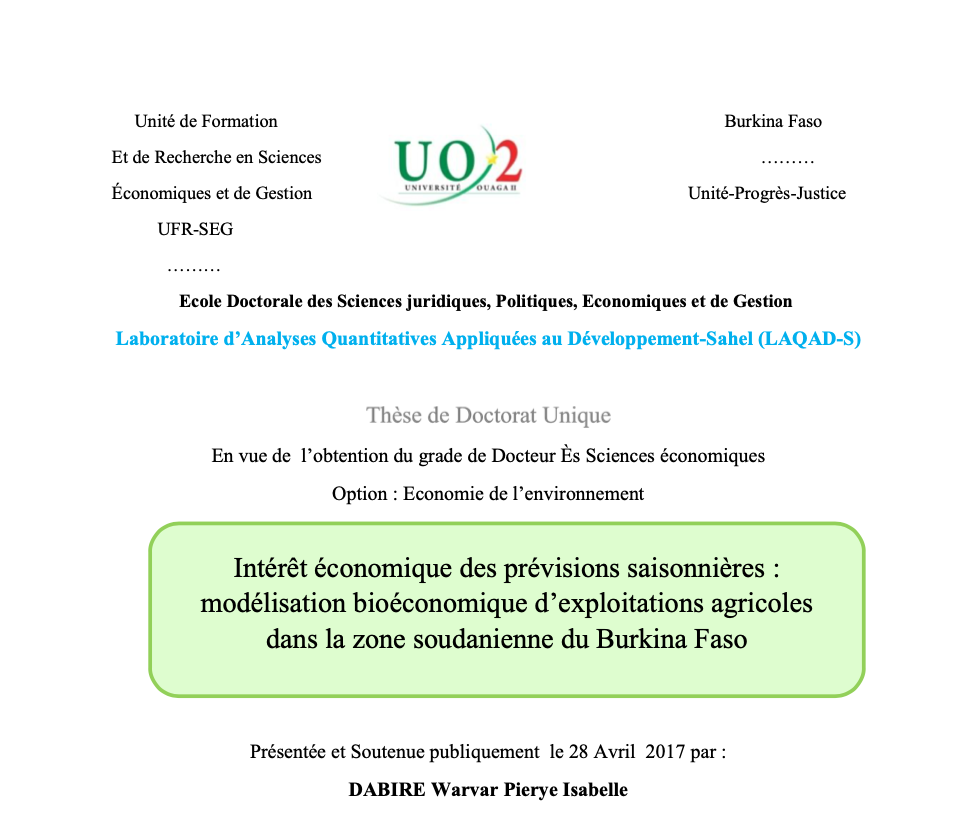Intérêt économique des prévisions saisonnières : modélisation bioéconomique d’exploitations agricoles dans la zone soudanienne du Burkina Faso

Farmers in Sub-Saharan Africa have been, for a long time, facing a strong climate change (Adesina & al., 2000) against which they developed a large range of strategies to adapt. But with the forecast increase of extreme climate phenomena, scientists have to find innovative tools of decision for farmers to reduce their uncertainty on climate change. Rainfall seasonal forecast is one of these tools and many authors showed its potential importance on farmers’ making decisions in Sub-Saharan Africa (Ingram & al., 2002). However, potential impacts of a forecast mistake have been seldom quantified.
The South West region of Burkina Faso is the most suitable region of the country for agricultural biomass production, but is characterized by a strong spatial and temporal rainfall change that have an impact on farmers’ choices of production and incomes. Ingram and al. showed that, providing seasonal forecast data to farmers in this area improve their choices of production, however, these authors did not quantify the economic impact of forecasts and the consequences of forecast mistake.
This study helped to assess the economic interest to provide farmers with rainy season rainfall forecast. Some innovative methods of communication and practical advice also contribute to help farmers to better anticipate natural risks related to rainfall in order to preserve their incomes. Given that famers often rely on traditional forecasting signs, this study describes quantitative as well as qualitative variables influencing the decision to choose climate information.